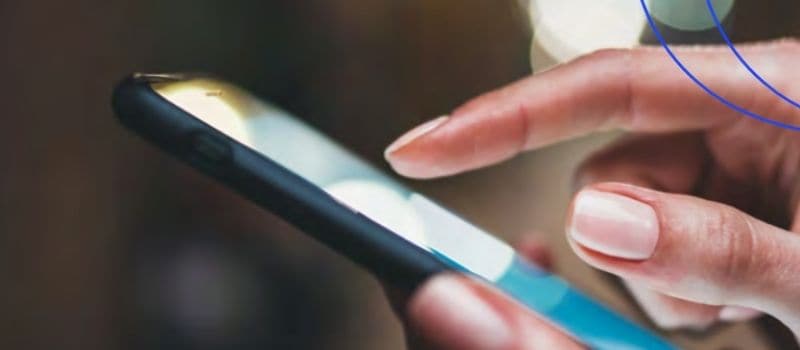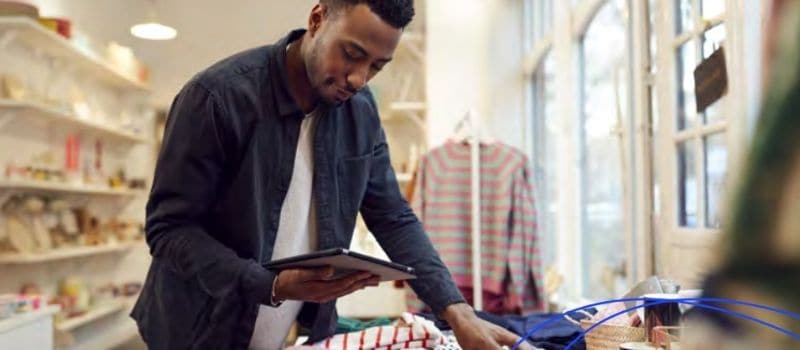5 Ways to Optimize Your BOPIS Experience

For modern shoppers, convenience and speed have proven to be top priorities. And the new habits and behaviors implemented in the last year are proving that those priorities aren’t going away.
Over 70% of shoppers adopted a new shopping habit in 2020 and 2021 and more than 60% plan to continue those practices. Those habits include increased digital shopping, a larger focus on convenient checkout, and a greater influence from social media. In fact, digital shopping recorded a 50% year-over-year increase in revenue. The number of purchases made directly from a social media channel increased by 104%.
But the largest pivot and new favorite shopping habit of customers is here to stay—Buy Online, Pick Up In-Store (BOPIS). Adoption rates for BOPIS have been steadily growing over the past five years, clocking in around 40% in 2016. But they’re expected to grow to 90% by 2024. For retailers, BOPIS is a heavy contributor to the bottom line.
Nearly 20% of retailers report that BOPIS orders contribute at least 65% of their total revenue.
But while customers and businesses are seeing the value in BOPIS—higher customer adoption and greater revenue for retailers—many businesses aren’t sure how to get started or to streamline existing BOPIS offerings.
Let’s take a look at the variety of ways a business can implement BOPIS options and how they can streamline the customer BOPIS experience.

What is BOPIS?
While BOPIS sounds pretty straightforward—buy a product online and then pick it up in-store—brands can execute the pickup experience in a few different ways:
Curbside
- With an app: The shopper completes their purchase online, drives to the designated store location, parks in a designated waiting space, indicates their arrival on the app, and a team member delivers the purchased product to their vehicle while the shopper waits curbside.
- With a phone call: The shopper completes their purchase online, drives to the designated store location, parks in a designated waiting space, indicates their arrival by dialing the store’s phone number and speaking to a team member, and then a team member delivers the purchased product to their vehicle while the shopper waits curbside.
- With a text: The shopper completes their purchase online, drives to the designated store location, parks in a designated waiting space, indicates their arrival via text message, and a team member delivers the purchased product to their vehicle while the shopper waits curbside.
Drive-Thru
- With an app: The shopper completes their purchase online, drives to the designated store location, gets in the drive-thru line, and then confirms their purchase via the app when they reach the drive-thru window.
- With a text: The shopper completes their purchase online, drives to the designated store location, gets in the drive-thru line, and then confirms their purchase via text message when they reach the drive-thru window.
In-Person
- With an app: The shopper completes their purchase online, drives to the designated store location, walks into the store to wait their turn to pick up their purchased items. When it’s time to speak to a team member, the shopper shows their receipt or confirmation number on their app to collect their items.
All three of these options grew in popularity during the COVID-19 pandemic when contactless and touchless shopping experiences were not only necessary but preferred by many customers. Retailers that adopted the BOPIS experience grew by more than 60% in the five days leading up to Christmas vs. retailers that failed to make the shift to BOPIS.
Retailers that adopted the BOPIS experience grew by more than 60% in the five days leading up to Christmas vs. retailers that failed to make the shift to BOPIS.
And it’s no surprise. BOPIS aligns with what customers want:
- Faster delivery. Products are delivered faster to customers—many within hours—compared to shipping purchases directly to the customer’s house.
- More real-time information. Not only is it possible for customers to see what inventory is available in their local store (and surrounding locations), customers can see that information in real-time.
- Increased convenience. Instead of waiting days for delivery, customers can choose to get their purchases faster and in the way they want—through the curbside pickup, in-store pick-up, or even drive-thru pickup.
- Reduced friction at checkout. With lower bounce rates and higher conversion, BOPIS offers a way to reduce typical friction at checkout—customers get to choose the most convenient option for their situation.
- Improved personalization. By offering multiple pickup options, customers can select the journey that works best for them—personalizing their journey.

Challenges with BOPIS
While BOPIS offers plenty of benefits—to both shoppers and businesses—the new shopping trend doesn’t come without challenges. As with previous shifts into a more digital customer journey, there are a few key areas that create friction for both consumers and businesses:
Too Many Communication Challenges
Over 50% of consumers say that repeating themselves is one of their top frustrations. With BOPIS, this issue can creep up quickly—a customer arrives at their designated store location and after indicating they have arrived via app or phone call, they must do so again (and maybe again) in order to receive their products. If they’re connecting with the store via phone call, the likelihood of getting placed on hold is high. And that just adds frustration—especially for 49% of consumers that say long hold times are one of the top reasons phone calls are so frustrating.
And consumers don’t want to be on a phone call. They want to be on their phones. 80% of consumers start their buying process from a mobile device. It makes sense that they would want to complete that process on their phone as well—not speaking on the phone with a team member.
For shoppers that do connect via phone call—many are connected to a bot and left trying to navigate a difficult phone tree. Consumers want to talk to a real human if they must make a phone call. They want personal interaction, not the disappointing and frustrating experience that 71% say happens when their shopping experience is impersonal.
Not Enough Pick-up Options
For 80% of consumers, convenience is a top priority in a positive customer experience. Before BOPIS options, consumers were left with shopping in-store or selecting shipping at checkout as they shopped online. Today, many BOPIS options are too limited—sidestepping any convenience that could be added to the customer journey—offering a very small improvement upon past shopping choices.
At the minimum, BOPIS often looks like a customer shopping online, waiting several hours to pick up their purchased items, and then walking in-store to collect their products. The physical act of walking in the store and waiting in line is likely the complete opposite of what consumers love about BOPIS—a faster, contactless, and touchless experience.
In other scenarios, consumers are required to stick to one pick-up option—the one they selected at checkout. This rigidity shows up in scenarios like this: a customer arrives at the store and then remembers another item they need to go inside and purchase. Instead of toggling between pickup options at the store (picking up their items inside now vs. curbside or through a drive-thru), they must wait through two lines—the BOPIS curbside pickup and then walk into the store to purchase the additional items.
For other BOPIS scenarios, consumers often have to wait several hours to select an appointment slot. Many businesses limit the number of consumers that pick up their purchases at a time. This creates a pattern of friction for the customer—waiting for a convenient appointment slot, losing the option to pick up products if they miss their designated appointment time, and rescheduling other errands in order to accommodate strict pickup schedules.
Disjointed processes
Customers expect a seamless, connected customer journey. When they’re met with long wait times, clunky online ordering, disorganized staff running out orders to cars, and situations where their orders are overlooked and they have to seek out help on the phone or in the store, the customer experience is frustrating.
And disjointed processes often indicate that internally, things are too chaotic. Many businesses struggle to offer simple BOPIS offerings simply because they lack adequate communication and coordination internally, and may have too many internal and customer communication tools in place that don’t integrate, leaving information siloed and difficult to find. In these cases, adding another channel to coordinate customer pickups won’t solve the problem (or make customers happy).
No matter the challenges, every business should always strive to be a customer first. And for today’s modern customer, that means creating a seamless, convenient, BOPIS customer experience.

In-Store Buyer’s Journey vs. a BOPIS Buyer’s Journey
The in-store buyer’s journey vs. a BOPIS buyer’s journey typically follows the same first three steps. Consumers research products or businesses online, land on a Google Business Profile listing, and then click through to a website. In-store shoppers and BOPIS shoppers alike will window shop online and research their product purchases with online reviews, product descriptions, and photos or videos. Often, customers engage with a customer service representative through a chat box directly on the website. At this point, however, the journeys branch off. In-store shoppers will now head to the store while a BOPIS customer journey remains online.
But for every stage, there are simple, effective strategies that can provide more convenience to your customer, automate work for your team, and improve your conversion for higher sales. Check out each touchpoint to see how you can think about and optimize your customer’s BOPIS journey—online and offline.

5 ways to optimize your BOPIS experience
- Communicate with customers in real-time
- Personalize the customer experience
- Streamline communication into the preferred channel
- Upgrade your payment processes
- Speed up the checkout process
1. Communicate with customers in real-time
Fewer than 30% of businesses offer real-time messaging options like live chat or in-app messaging. And yet, customers require a more high-touch experience, especially for a BOPIS experience.
Local shoppers that buy online still need a real-time experience—whether that’s through a real-time inventory check at their local retailer, an easy-to-use messaging option that will help shoppers get answers quickly, or a more seamless check-in experience in the store or curbside.
For higher ticket purchases, BOPIS can offer the right consultative approach if the local retailer and assigned sales associate are readily available. For 70% of shoppers, a customer service or sales reps’ awareness of their sales interaction is fundamental to keeping their business. And it often impacts how much customers spend. Many customers are willing to pay up to 18% more for luxury items and services simply because they received a great customer experience.
To better communicate with customers in real-time and offer a seamless BOPIS experience, consider the following:
- Use text messaging to communicate with customers in real-time instead of queuing arrivals to your store, on the phone, or in an app (90% of consumers prefer to speak with businesses via text anyway)
- Offer inventory checks to customers in real-time through texting and web chat boxes—instead of routing customers through your website or a central team for everything, allow customers to personalize their experience and connect to a local store member faster
2. Personalize the customer experience
Modern-day shoppers expect some level of personalization with every brand they interact with, but especially with retailers. And while a personalized customer experience isn’t unique to the BOPIS shopper, it’s growing more critical for mobile consumers. 75% of consumers say they actively want to receive personalized offers and upsells, directly on their mobile device.
But beyond personalized offers, a personalized experience influences all consumers to purchase more. 80% of consumers say they are more inclined to purchase from a company that offers a more tailored experience—this is especially true with BOPIS customers purchasing larger items like appliances or furniture.
Personalizing options like pickup—curbside, drive through, in-store—and communication—web chat, texting, in-app conversations, create a personalized experience that meets BOPIS shopper expectations. To better personalize the customer experience and offer a seamless BOPIS experience, consider the following:
- Allow customers to change their pick-up option when they arrive at the store–all through their preferred channel: texting
- Convert webchat conversations to text conversations, personalizing the experience for customers on the go
3. Streamline communication into the preferred channel
Over 90% of consumers report using a mobile device to research a product purchase and then go on to actually make a purchase. Funneling communication into the same, preferred channel only aligns retailer practices with what consumers say they want.
Beyond streamlining communication for the customer into a single thread or the right channel, the backend is just as important. Employee conversations about existing customers are critical to delivering a high-value, high-touch experience. Organizing all customer communication into a single, internal inbox reduces confusion for your staff, improves the experience for the shopper, and saves everyone time. And it’s expected by modern-day consumers—more than 70% of consumers expect businesses to internally collaborate on their behalf so they don’t have to repeat themselves or chase down answers that could be resolved internally.
To better streamline communication into preferred channels to offer a seamless BOPIS experience, consider the following:
- Create a single line of communication for each customer via text—with direct links to product pages, payment options, and other historical conversations
- Manage all customer communication from a single, internal inbox instead of adding more channels to your already overloaded staff (and with one inbox, your team members will have full conversation history and context to better communicate with each customer)
4. Upgrade your payment processes
For 40% of in-store shoppers—which includes BOPIS consumers—convenience matters the most at checkout. And the most convenient option for purchase? Texting. Consumers report that texting makes working with or buying from a business more convenient. In fact, over 80% of shoppers say they want to make payments digitally on their phones.
Contactless and touchless experiences are expectations that are here to stay—even after the COVID-19 pandemic ends. Nearly 80% of consumers say they want businesses to continue offering contactless payments after the pandemic. And the reasonings are clear—it’s safe, fast, convenient, and more sanitary.
To better upgrade your payment processes and offer a seamless BOPIS experience, consider the following:
- Provide contactless payment options for your BOPIS customers—through touchless card readers and pay-on-the-go with texting
- Text receipts directly and automatically to your BOPIS customers’ mobile devices—it’s a real-time confirmation of payment and satisfies contactless payment preferences
5. Speed up the checkout process
The checkout experience for the modern-day consumer is critical to the overall customer experience—especially for BOPIS shoppers. And if it’s inconvenient, you’ll likely lose the purchase. Nearly every shopper—97%—in the United States has backed out of a purchase because it was inconvenient. And more than 50% of shoppers say that at least half of their purchases are influenced by convenience.
But what makes the checkout process speedy? For BOPIS customers it can mean multiple checkout options—curbside, drive-through, and in-store, automated check-in messages, opportunities to switch the pick-up option once the customer has arrived at the store, and offering more same-day service. For 40% of consumers, same-day service is so important they’re willing to pay more for the option instead of waiting until the next business day or longer for their purchase.
To better speed up your checkout process and offer a seamless BOPIS experience, consider the following:
- Automate any common messages or customer communication to speed up the checkout process (e.g. park here for pick up, text when you arrive, post-purchase survey links, etc.)
- Allow your BOPIS customers to adjust their orders directly from their phones—changes like pick-up or payment method at the last minute reduce friction for the customer and improve customer satisfaction for you

Upgrade your BOPIS experience with an Interaction Management platform
With the right Interaction Management platform, your BOPIS experience can help you:
- Leverage every preferred messaging channel—one secure inbox for all messages (and every location for your brand) from Facebook, Google, and more.
- Gather reviews easily and quickly—a simple text has a higher chance of response than email and only takes 30 seconds.
- Convert website visitors to text conversations—use a web chat feature that keeps the conversation going.
- Offer speed and convenience across all interactions—find a solution that prioritizes ease in all communications including scheduling, feedback, payments, and reviews.
- Integrate with and consolidate your existing tech stack—continue work in the tools you already use.